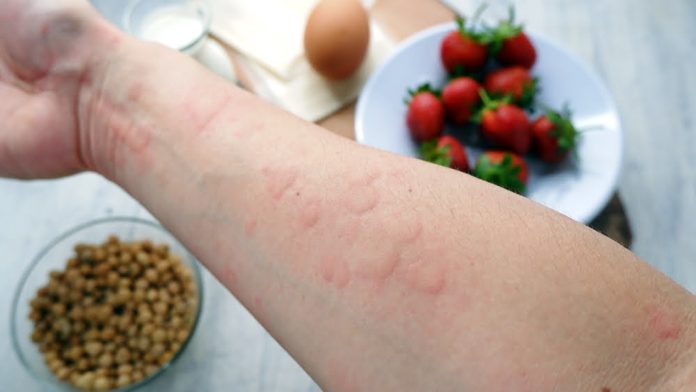People often have an unpleasant reaction to something they ate and think they have a food allergy. But they may be having something else: a reaction called food intolerance.
What’s the difference?
A food allergy is caused by your immune system reacting to the food when it doesn’t need to.
With a food intolerance, your immune system isn’t responsible. Most of the time it’s a problem with digesting the food.
For example, being allergic to milk is different from not being able to digest it properly because of lactose intolerance.
Some people come from families where allergies are common — not necessarily food allergies, but perhaps hay fever, asthma, or hives. When both of your parents have allergies, you’re more likely to have food allergies than if only one parent has allergies.
If you think you have a food allergy, see a doctor to confirm what’s triggering it and get help managing and treating it. Sometimes allergic reactions to food can be severe, even life-threatening.
How Food Allergies Work
Food allergies are triggered by either IgE or non-IgE proteins and how they affect mast cells, which you have in all body tissues but especially in places like your nose, throat, lungs, skin, and digestive tract. IgE stands for immunoglobulin E and is a type of protein called an antibody that moves through the blood.
The first time you eat a food you’re allergic to, certain cells make a lot of IgE for the part of the food that triggers your allergy, called an allergen. The IgE gets released and attaches to the surface of mast cells. You won’t have a reaction yet, but now you’re set up for one.
The next time you eat that food, the allergen interacts with that IgE and triggers the mast cells to release chemicals such as histamine. Depending on the tissue they’re in, these chemicals will cause various symptoms. And since some food allergens aren’t broken down by the heat of cooking or by stomach acids or enzymes that digest food, they can cross into your bloodstream. From there, they can travel and cause allergic reactions throughout your body.
The digestion process affects the timing and the location. You may feel itching in your mouth. Then you may have symptoms such as vomiting, diarrhea, or belly pain. Food allergens in your blood can cause a drop in blood pressure. As they reach your skin, they can trigger hives or eczema. In the lungs, they may cause wheezing. All of this takes place within a few minutes to an hour.
Non-IgE-mediated food allergies are characterized by a delayed onset of signs and symptoms which can occur over hours to even days following ingestion.
Which Food Allergies Are Most Common?
In adults, they include:
- Peanuts
- Tree nuts, such as walnuts
- Shellfish, including shrimp, crayfish, lobster, and crab
For children, the food allergens that most often cause problems are:
- Eggs
- Milk
- Peanuts
- Adults usually don’t lose their allergies, but children do sometimes. Kids are more likely to outgrow allergies to milk, eggs, and soy than to peanuts, fish, and shrimp.
- The foods that you’ll react to are often those that you eat regularly. In Japan, for example, you’ll find rice allergy. In Scandinavia, codfish allergy is common.
· Cross Reactivity and Allergies
- When you have a life-threatening allergic reactionto a certain food, your doctor will probably recommend that you avoid similar foods, too. For example, if you react to shrimp, you’re probably allergic to other shellfish like crab, lobster, and crayfish. This is called cross-reactivity.
- Another example of cross-reactivity is oral allergy syndrome. It happens in people who are highly sensitive to ragweed. During ragweed season, when they try to eat melons, especially cantaloupe, their mouths may itch. Similarly, people who have severe birch pollen allergymay also react to apple peels.
· Exercise-Induced Food Allergy
- At least one type of food allergy needs more than simply eating the allergen to cause a reaction. If you have exercise-induced food allergy, you won’t have a reaction unless you then do something physically active. As your body temperature goes up, you’ll begin to itch, get lightheaded, and could have hives or even anaphylaxis.
- Fortunately, the cure is simple: Don’t eat that food for a couple of hours before you work out.
Is It Really a Food Allergy?
A differential diagnosis is the process of telling the difference between a food allergy, a food intolerance, and other illnesses. When you go to the doctor’s office and say, “I think I have a food allergy,” they have to consider a list of other things that could cause similar symptoms and be confused with a food allergy. These include:
- Food poisoning
- Histamine toxicity
- Food additives, including sulfites, MSG, and dyes
- Lactose intolerance
- Gluten intolerance
- Other diseases
- Psychological triggers
Foods can get contaminated with bacteria and toxins. Tainted meat sometimes mimics a food allergy when it’s really a type of food poisoning.
Histamine can reach high levels in cheese, some wines, and in certain kinds of fish, especially tuna and mackerel, if it hasn’t been refrigerated properly. When you eat foods with a lot of histamine, you could have a reaction that looks like an allergic reaction. It’s called histamine toxicity.
Credit: webmd.com









